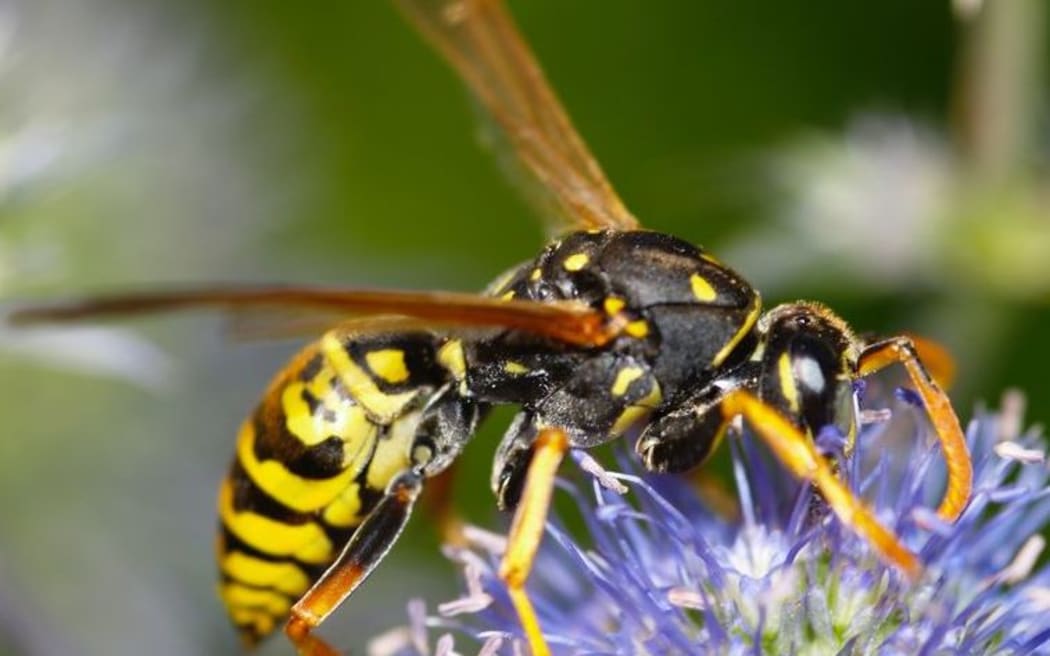A Landcare Research scientist says a tiny mite found on the back of wasps could be helping control the spread of the pests, which sting the country's primary industries by about $130 million a year.

Photo: 123RF
Wasps also pose a hazard to people and harm the native bird population by competing with them for food, including honeydew and other insects.
Dr Bob Brown discovered the unnamed mite in 2011. He said his studies showed wasp nests infested with the mites were 50 to 70 percent smaller than uninfested nests.
He said his research results indicated the mite could be working as a biological control for the pests.
"What it looks like so far is that the mites are probably vectoring some kind of pathogen, virus or bacteria into the nest.
"It doesn't kill the nest outright, but it makes them ill, so they're not competing as well as they should be," he said.
Dr Brown is collecting more information about the mites' presence on queen wasps over winter around the country, and is seeking help from the public.
"At this time of year, the queen leaves the colony to hibernate. They go in search of somewhere dry and dark, and they can often come into people's garages, sheds or woodpiles."
Dr Brown said wasp queens were very docile when hibernating, but advised people to take care when approaching one.
He asked members of the public to place the wasp in the freezer overnight to kill it, before posting the pest to him.
He can be reached at PO Box 69040, Lincoln, 7640.
The research is funded by the Ministry for Primary Industries' Sustainable Farming Fund.


